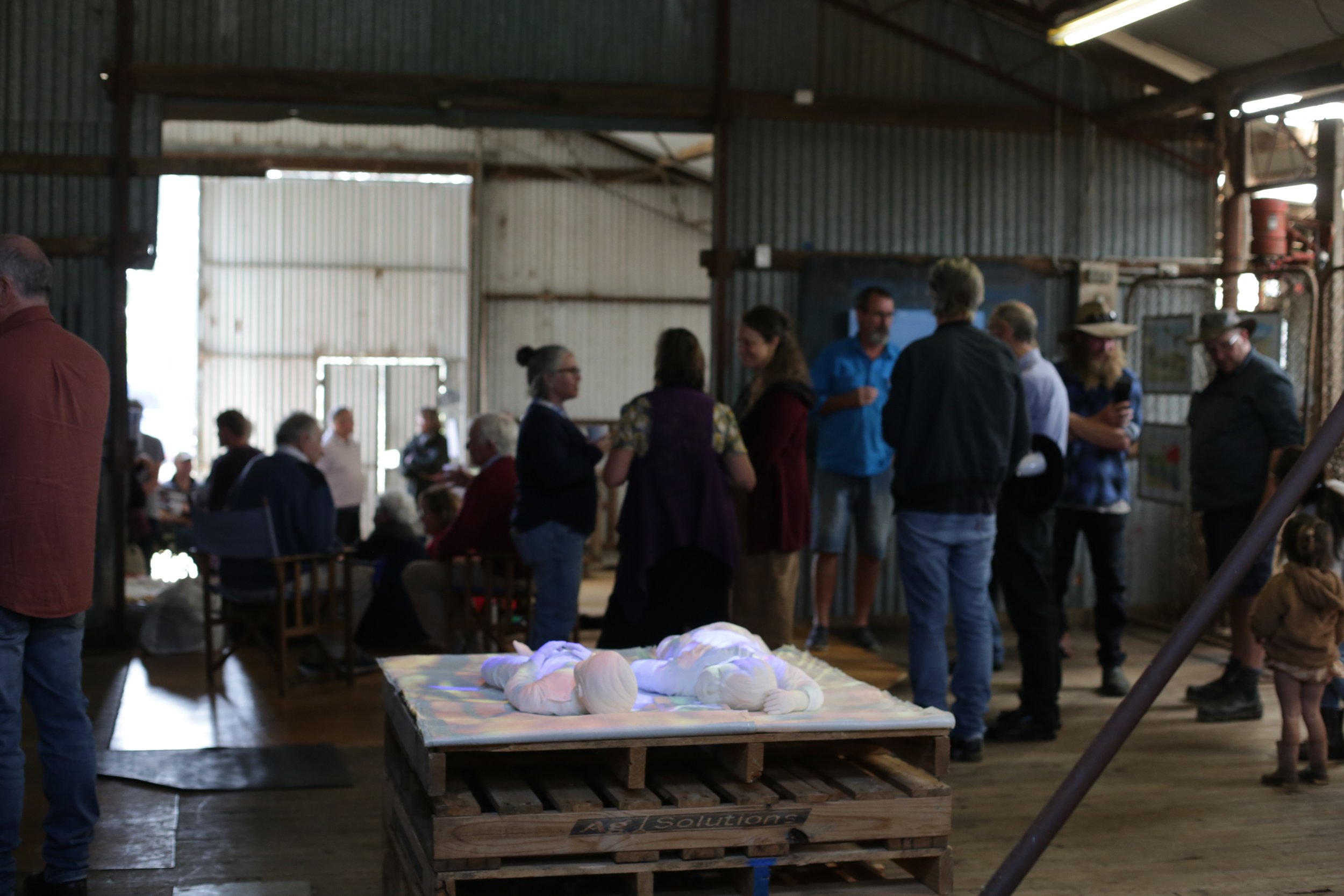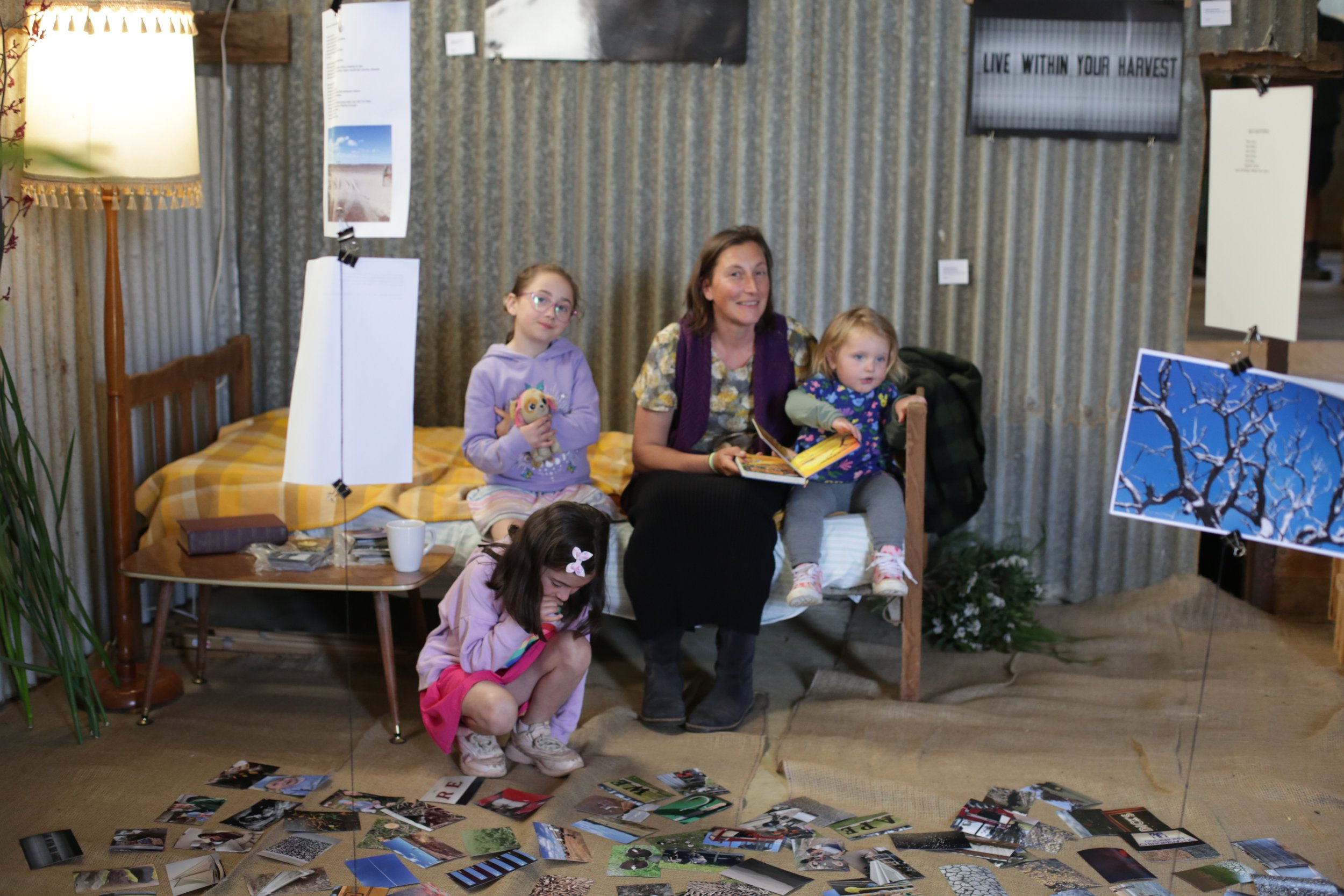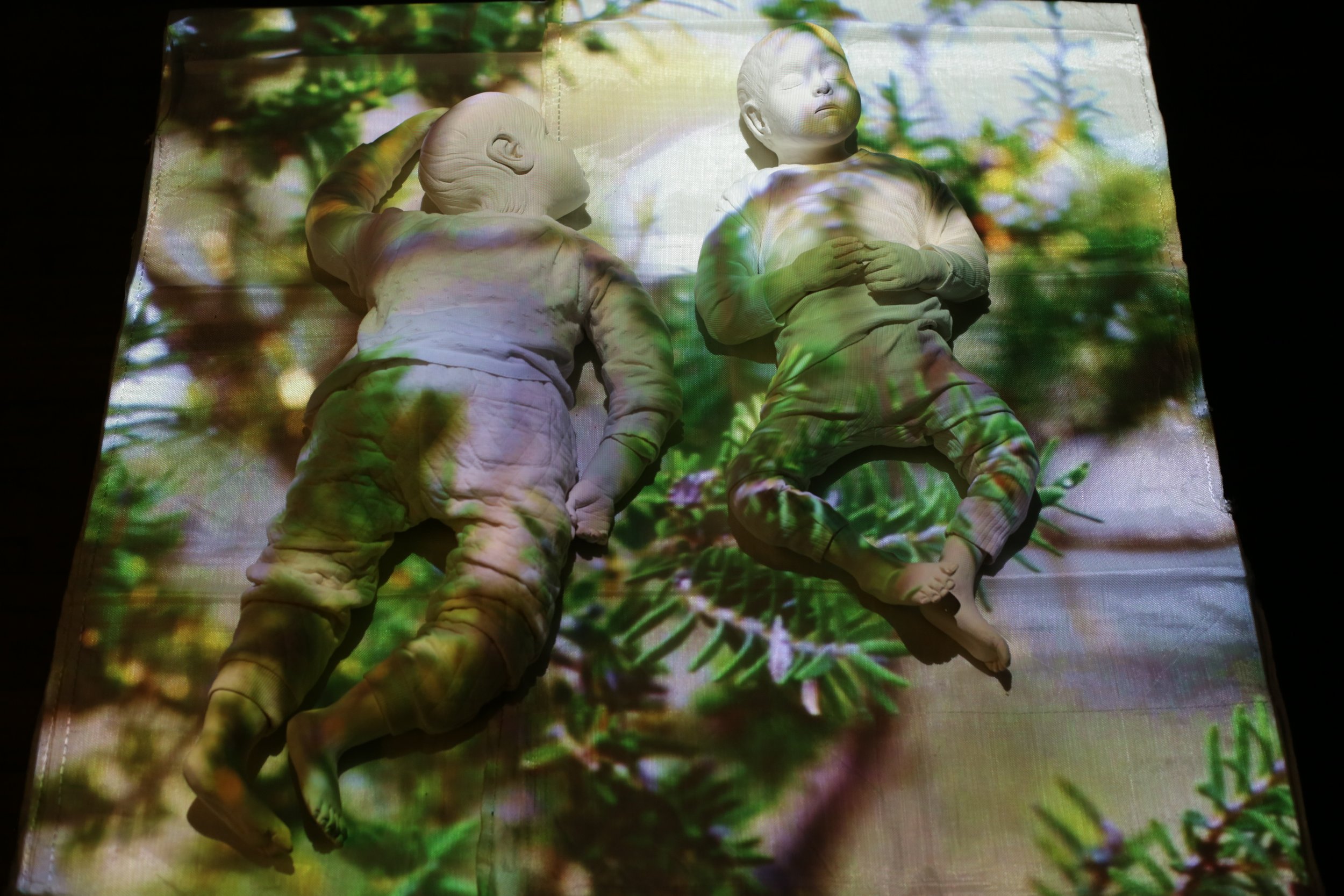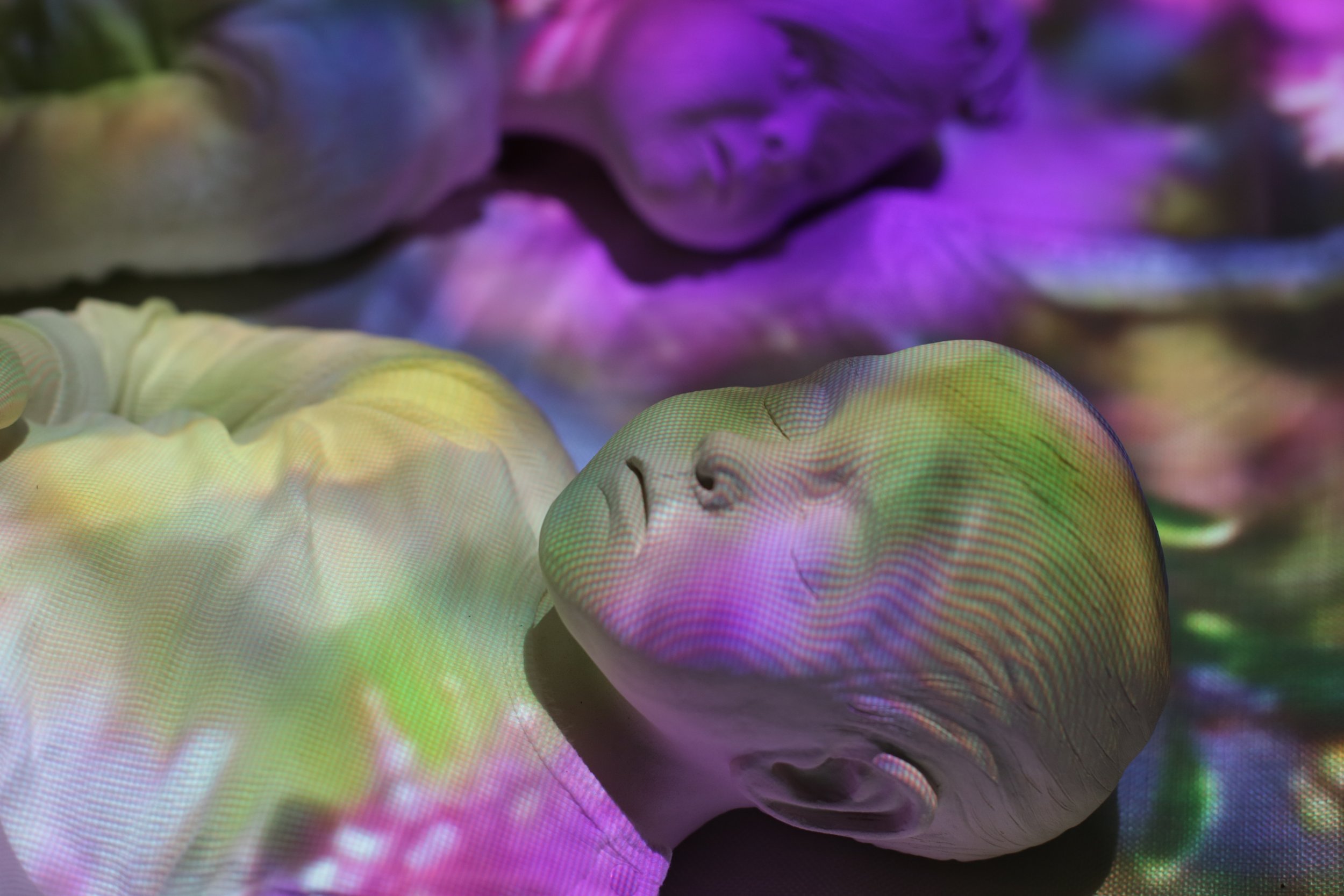Rural Utopias Residency: Elizabeth Pedler in Wellstead Stage 2 Reflection #6
Elizabeth Pedler is currently working with the community of Wellstead. This work is one of over ten, forming part of one of Spaced’s current programs, Rural Utopias.
An artist interested in the range of participation possible in art, Elizabeth's practice spans from playful and interactive installations to collaborative relational aesthetics. Identity, food, and community involvement are areas of particular focus, and have led to significant artistic development in her recent arts practice, engaging with audiences through the sharing of experiences and storytelling.
Here, Elizabeth shares an update from Wellstead.
Rural Utopias Wellstead Stage 2 / Week 6
23 – 30 October 2023
It was a busy final week to the SPACED residency in Wellstead, but nonetheless rewarding, and dotted with moments of pause and reflection.
Juno (18 months old now) and I drove down to the farm on Monday, pulling up at the Nissen hut at 5.30pm. We spent the last hour of daylight unpacking and making the beds. Josten Myburgh, who was again assisting with the audio, arrived with his friend Ingrid Lyons (artist-in-residence at Fremantle Arts Centre), and then Kerry and Esmae (now 21 months old) turned up at the door to welcome us as well. Juno remembered her friend, and excitedly pointed at her and shouted “Mae! Mae! Mae!” along with some enthusiastic hand-flapping and stomping of feet for good measure. We had dinner up at the farmhouse with our hosts Richard Davy and Kerry Dell’Agostino, and then chatted over dessert, and worked out our plans for the week.
Tuesday, Wednesday, and Thursday, Billie was coming to the farm, and she would be looking after the girls, allowing us each more time to get things done and focus on our respective tasks. While Josten and I had the artwork to finish and the exhibition to prepare for, Kerry would also be helping to host a workshop on animal communication, and Richard would be seeding the next hemp crop.
On Tuesday, Kerry, Ingrid, and I started by cleaning out the shearing shed. After a quick walk around a few sheds with Richard and Kerry to select the venue for the planned exhibition on Sunday, we decided the shearing shed would be best suited for showing the artwork, but it nonetheless had a lot of things that needed to be cleared out, brushed off, moved around, or removed to the tip. After most of the rubbish was gone, we pulled bits of loose wool from the wire panels, hand-picking them clean to use as walls for hanging the 2D artworks. I had spent some time since the last week in Wellstead (back in July) planning a group exhibition. Talking to a number of locals, I was not the only artist interested in plants. I invited Joyce Hall, Margaret Gorman, and Catherine Higham, as well as Richard and Kerry, to contribute artwork on the theme of ecology in the Cape Riche region for an exhibition titled Nature or Nature.
Just a one-day event, it would be a good send-off for the project, and to my mind, a way of recognising the contributions already being made by local artists to the community. To prepare the shearing shed for such an event was a fair bit of work, but it quickly looked brighter and ready for life as an art gallery once we’d moved out the wool packs, organised the machinery, and dusted off the cobwebs.
Wednesday and Thursday, Kerry was busy with the animal communication workshop, so I spent the time inside at the hut completing the video and the sculptures of the two girls, while Josten did the final edits on the sound work, and tested the equipment.
I had completed the heads, hands and feet of the sculptures up in Perth. The clay (sourced from a dam on Richard and Kerry’s farm) had been fired, and came out a warm white.
I used a zippered onesie for each body, with an armature inside made of fencing wire offcuts from the shed, and stuffed the onesies with wool from the Windi Windi sheep. I used string to connect the bodies to the heads, stitching through holes I’d made in the clay at the base of the neck. The hands and feet I simply friction-fitted, rather than securing permanently, with wire from the armature going into each ceramic limb at the connection point.
With each body stuffed, I used long bandage-like strips of white cotton fabric to bind and shape the bodies. Forming them by pulling tight in places, and building up shape in others, until they seemed natural and familiar in their contours. I used the wire armature to position the bodies, until it seemed like each was in a comfortable, restful posture, as if asleep, or nearly. Once complete, I then dressed them in fresh white clothes, purchased for this purpose, so each sculpture was white all over, a surface for the projected video. With the final step, dressing them, it was evident how much harder it is to dress a rigid, unmoving body, than the pliable if at times resistant body of a real toddler. But, once dressed, they immediately had an uncanny sense of the real, the eye tricked by the familiar shapes and posture of the bodies, the texture of clothing and even the bisque-fired ceramic appearing like skin. They seemed so much like the real thing that Ingrid commented on the difficulty of watching me shape and re-position their arms and bodies, as if I could be hurting them.
The install in the shed occurred over several days, in bursts as and when we could.
On Wednesday after dinner (while Ingrid looked after Juno at the hut, and Billie looked after Esmae at the farmhouse), Kerry, Josten, and I hung the speakers from the joists, and strung up the audio cables. On Thursday afternoon, Richard came back and used the firefighter water-tank on the back of the old yellow Toyota LandCruiser to hose down the shed, and wash the floors. On Friday morning, Josten placed the last speakers and set up the sound desk, and I sat in the shed, listening to the sound work while feeding Juno, and thought about where the artworks would hang. Josten and Ingrid departed for Perth on Friday at midday, and that afternoon Kerry and I hung the 2D artworks, which went up quickly.
The projector was more of a challenge, as it needed to go up high, to project the video down onto the sculptures of the girls, but the roof of the shed was intimidatingly lofty. Kerry and I had spent a fair while working out where and how to place it. From middle of the ceiling, at the peak of the roof? This would be a dangerous height to climb while carrying the large and heavy projector. Or at an angle, on a beam placed between struts off to one side? Still climbing a ladder, but not as high, though the projector would have to work against the angle and would need to be keystoned. Craig Lock arrived at the right moment (after he and his wife Teena had spent the afternoon babysitting Juno), and he offered to climb up the ladder, carrying the projector with him. He made a rope harness for the projector, hanging it from the centre of the ceiling joists, so that it would project straight down onto the sculpture, with a safety made from fencing wire to another point on the projector, should the rope loosen or become unstable. Kerry and Craig joked about how the knots learned in agricultural college come in handy in art exhibitions. With the projector in place, we hooked it up to the computer, then turned it on, and at last the image came through bright and clear.
After dinner on Friday night, I put Juno to sleep up at the farmhouse, and Kerry looked after both girls, while I went back to the shed to work on the projection. Late in the evening and tired though, I was not my best self. Standing up on the ladder near the projector, at least 4m off the ground, whilst carrying my DSLR camera and laptop in both arms to try and get them to connect (in order to use the Spatial Scanner function in MadMapper), trying but failing, I realised I was not thinking clearly, and decided to call it a night. I’d hoped to get the projection mapped that night, but accepted I’d need to do it on Saturday instead. I went back to the house, just in time for Juno to wake up, then took her back to the hut for a feed, and back to our own beds for the night.
Saturday I began by reading up more on the projection mapping software I was using, MadMapper, and downloading a number of guides to be able to view them in the shed while working offline. Kerry and her mum, Rosie, took the girls to Wellstead to pick up the urn and cups for coffee and tea on Sunday, and so I had some free time to myself to get the projection working.
With a good night’s sleep and the clear light of day, I was able to get the projection mapped out much more efficiently. It wasn’t as bright or as saturated as I’d hoped, which I attributed to the skylights in the shed. With this in mind, I mapped a simpler shape, the whole of the plinth (a stack of pine pallets covered in wool packs), rather than masking out the bodies of the sculptures as I’d planned. The complex shape and curved surface of the bodies made it a bit more difficult to read the images, and with the dim image, it was easier to perceive the video when mapped to a larger area. Once mapped, the video neatly cut off at the edges of the pallet, and played on a continuous loop.
In the afternoon, I took Juno for a walk and she fell asleep in the pram, so I used the quiet time to write a thank you note for Richard and Kerry, and wrap a small gift. After she woke up, Kerry and Rosie took the girls in the car, and went to pick some flowers from the bush. Richard was in the shed, installing his artwork, and I got up on the roof and covered the skylights with sheets of black plastic, secured to the roof with gaffer tape. As the wind started to rise, I got the job done but doubted the plastic would last the night, with tape all it had to stop it from blowing away.
After Juno had gone to bed that night, I went back to turn off the projector. With a fortuitous moment of a fairly pale image playing, I noticed one of the masking layers from the projecting mapping (an image of the sculpture on the pallet – the view from the projector) was mistakenly still switched on. With a few clicks, the offending layer was hidden, and suddenly the image was markedly brighter, and significantly more saturated. I could see in front of me the artwork as I had imagined it – the otherworldly shapes of banksias, the curling and spiked hakea leaves, the delicate bells of boronias, dappling the skin of the babies and dancing across their bodies, a dreamlike state of colour and light. Satisfied, I turned off the projector, and went back to the hut to go to bed.
Sunday morning Juno was up early, and after breakfast I took her up to the house to play with Esmae (looked after again by the lovely and generous Rosie), while I put up the artwork labels, and helped Kerry arrange the flowers for the shed. We got it done just in time as the first few started to arrive just before 10am, and before long there were a dozen visitors walking around, having a look at the artworks, and chatting to each other. I picked up Juno and brought her back with me to the shed. She soon fell asleep on me in a chair, and I sat with Joyce Hall, and talked about her artwork and her time living in Wellstead, as the rain pattered on the roof.
As the day progressed, more people arrived, and they came up to talk to me about the exhibition, the community, and how I made artwork. We had lunch in the shed, and a few times I took Juno back to the Nissen hut for some time out, to change her nappy, have a snack, and calm down, as she was getting overwhelmed by the new faces and everything going on. After a short walk in the pram, she fell asleep just before 3pm, perfectly timed to return to the shed and have a quick word with the assembled crowd – about 40 people by then. I said a few words of thanks, to SPACED, to the artists, to the people I’d interviewed, and to Richard and Kerry. I handed over to Richard, and he read two poems – Sydney Wattle and Nature or Nurture, both of them new pieces he’d finished recently.
The reading was a beautiful book-end to the exhibition, and a fitting conclusion to the day. Soon after, people began to say their goodbyes to each other and depart. Joyce and Catherine packed up their artworks and took them home, and I took Juno back to the hut to have a snack and another change. A little while later, Juno and I went back to the shed and I packed up Margaret’s artworks into the car to move them down to the hut, and then we had dinner at the house, our last night in Wellstead with Kerry, Richard, Rosie, and Esmae.
Monday morning we were up early at 5am, but Juno fell asleep on me at 7, and so it slowed down our process of getting packed and out of the hut. We were out of there, everything from the hut packed into the car at 8.30am, and joined them up at the farmhouse for breakfast. The girls stayed at the house, and Kerry came with me to the shearing shed to help me pack up the remaining items – the sculptures, the sound desk, speakers, and projector. Richard climbed up and took down the plastic from the roof, which had miraculously stayed in place. It took a couple of hours, but soon everything was in my car, wrapped and fitted into place, to make the journey home safely. Back at the house, we had toast and a cup of tea, and then said our goodbyes. Juno and I left at 11.40am, going back to Perth via Kendinup, stopping for fuel in Cranbrook then Williams, and a last pause for a toilet and a walk at Gleneagles rest area near Jarrahdale. Juno was very sleepy on the way home, for which I was grateful, and we had a quiet drive and fewer stops. Pulling up at home at 5.30pm, I unpacked the car while Juno played with her aunt Amanda, Andrew’s sister. Like every other day that week, having help with Juno made it possible, and smoothed out the bumps. Without assistance, none of it would have been achievable on my own.
As we were installing that week, Kerry and I reflected on how Juno and Esmae feature in the artwork. They are the key to the artwork, and their eyes are offered as the perspective through which to see the plants, and through their ears to hear the stories. But without care for the girls – from Rosie, Billie, and Ingrid, and support from Josten and Richard in making meals – we would not have been able to make the exhibition happen. It’s curious how the artwork centres Juno, and yet I need to exist separate from her in order to make it.
My artwork is in large part connected with my daughter, our relationship, and the way children shape our view of the world around us. But I need space from her in order to make it – the artwork is like a second child that I have been making and caring for, and it is nearly impossible to adequately fulfil the roles of parent and artist simultaneously. Ingrid and I even joked about this, as she helped me carry the sculptures from the Nissen hut to the shearing shed. With the sculpture of Juno resting on a sheet of tin we carried between us, she commented that we were literally delivering a baby.
This project has been another baby in my life, one that I’ve needed to grow, and make time for. Now it was out in the world, independent from me, and I felt the relief of no longer having to parent this project. Like the relief of giving birth, the artwork was now external, no longer embedded in me and my organs. I could once again take a deep breath.
Image credits: Elizabeth Pedler Rural Utopias artist-in-residency exhibition, ‘Nature or Nurture’ at Wellstead, 2023. Images courtesy Elizabeth Pedler.





